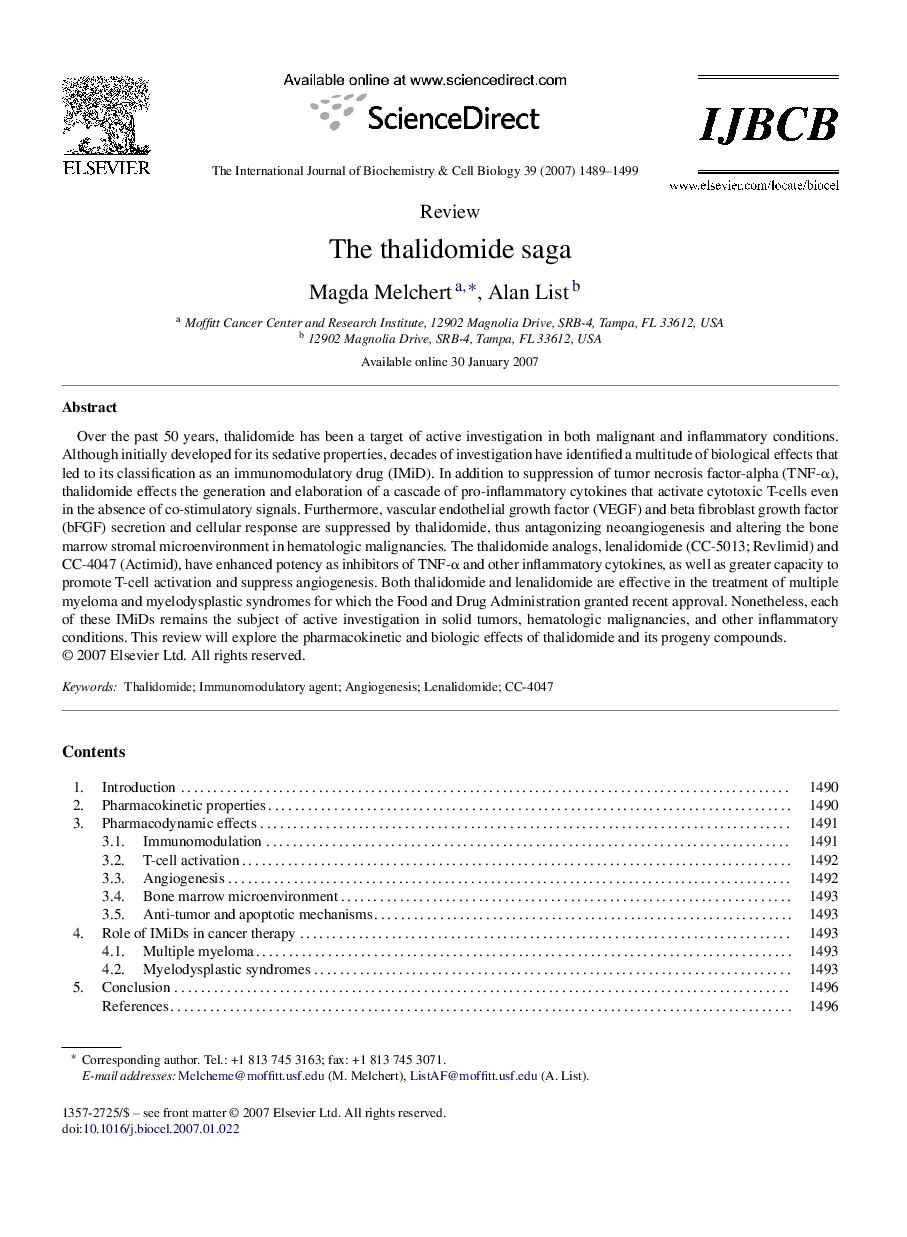| کد مقاله | کد نشریه | سال انتشار | مقاله انگلیسی | نسخه تمام متن |
|---|---|---|---|---|
| 1984340 | 1539973 | 2007 | 11 صفحه PDF | دانلود رایگان |

Over the past 50 years, thalidomide has been a target of active investigation in both malignant and inflammatory conditions. Although initially developed for its sedative properties, decades of investigation have identified a multitude of biological effects that led to its classification as an immunomodulatory drug (IMiD). In addition to suppression of tumor necrosis factor-alpha (TNF-α), thalidomide effects the generation and elaboration of a cascade of pro-inflammatory cytokines that activate cytotoxic T-cells even in the absence of co-stimulatory signals. Furthermore, vascular endothelial growth factor (VEGF) and beta fibroblast growth factor (bFGF) secretion and cellular response are suppressed by thalidomide, thus antagonizing neoangiogenesis and altering the bone marrow stromal microenvironment in hematologic malignancies. The thalidomide analogs, lenalidomide (CC-5013; Revlimid) and CC-4047 (Actimid), have enhanced potency as inhibitors of TNF-α and other inflammatory cytokines, as well as greater capacity to promote T-cell activation and suppress angiogenesis. Both thalidomide and lenalidomide are effective in the treatment of multiple myeloma and myelodysplastic syndromes for which the Food and Drug Administration granted recent approval. Nonetheless, each of these IMiDs remains the subject of active investigation in solid tumors, hematologic malignancies, and other inflammatory conditions. This review will explore the pharmacokinetic and biologic effects of thalidomide and its progeny compounds.
Journal: The International Journal of Biochemistry & Cell Biology - Volume 39, Issues 7–8, July–August 2007, Pages 1489–1499